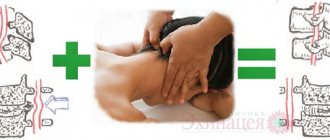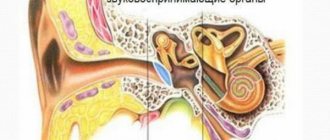general information
It happens that a completely healthy newborn baby begins to cry for no apparent reason, refuse to eat, have trouble falling asleep or sleep restlessly at night. Or older children complain of severe headaches , which may be accompanied by bouts of vomiting against the background of a general loss of strength. In such cases, doctors often diagnose increased intracranial pressure (hereinafter referred to as ICP).
What is ICP and what are its symptoms? What could be the causes and consequences of this ailment for a person’s health and well-being? We will answer this and many other questions on the topic in this material. But first, let's look at some general questions that relate to the physiology and structure of the human brain.
Treatment of the syndrome
To treat increased intracranial pressure in children, preventive measures, drug therapy, surgery, and traditional medicine are used.
Medicines prescribed to the child to improve the condition:
- A group of drugs that improve blood circulation in the brain: Cinnarizine, Actovegin, Pantogam.
- Drugs from the group of neuroprotectors, for example, Glycine.
- Diuretics: Triampur, Diacarb, Furosemide.
- A group of nootropics designed to improve blood supply to the brain: Cavinton, Piracetam.
- Sedatives: "Nereokhel".
- Medicines from the homeopathic group, for example, Traumeel.
- Multivitamins with the mandatory inclusion of Magnesium B6.
According to indications, to eliminate symptoms of pressure in the brain, operations to remove tumors and shunting of the cranial cavity are prescribed to pump out excess cerebrospinal fluid.
What is intracranial pressure?
The human brain is located in the cranium and is an incredibly “delicate” substance that can suffer from the slightest impact. Therefore, to protect it, nature has provided our body with three barriers:
- The outer hard shell lines the cranial cavity from the inside; it differs from others in its strong and dense structure, which is dominated by elastic and collagen fibers.
- The middle arachnoid membrane is located behind the dura mater; it is thin and transparent. However, unlike the next soft shell, it does not penetrate into the furrows of the hemispheres and into the cracks between the parts of the brain. The choroid is separated from the arachnoid by the subarachnoid space, which is filled with cerebrospinal fluid ( CSF ).
- The inner choroid or pia mater fits tightly to the surface of the brain and penetrates its grooves and crevices. It consists of connective tissues that nourish the human brain and forms the choroid plexus, which is responsible for the production of cerebrospinal fluid.
Thus, ICP is the pressure on the brain structure of the cerebrospinal fluid (CSF), which protects from injury and damage, which fills the subarachnoid and epidural space, as well as the ventricles of the brain. In simple words, ICP is the difference between atmospheric pressure and pressure inside the cranial cavity.
Impaired circulation of cerebrospinal fluid leads to its deficiency and accumulation in some parts of the skull. An absolutely healthy person produces on average a liter of cerebrospinal fluid per day, which nourishes the venous vessels of the brain. In the presence of any pathologies, the cerebrospinal fluid is not absorbed in full, and its excess mass leads to an increase in intracranial pressure.
The structure and functioning of the brain is so complex that it has not been studied until now. Although it is already reliably known that normal ICP values depend on:
- vascular tone;
- cerebral perfusion pressure (level of blood supply to the brain);
- volumetric cerebral blood flow;
- resorption and production of cerebrospinal fluid, as well as its colloid-osmotic homeostasis;
- the degree of permeability of the blood-brain barrier between the nervous and blood supply systems of the body.
If at least one of the above factors changes, then a protective mechanism is triggered in the form of a compensatory reaction. As a result, blood pressure and cerebral vasoconstriction occurs, which affects the level of ICP and cerebral circulation.
High blood pressure, how much is it? During normal operation of all vital systems of the human body, ICP indicators range from 7.5 to 15 mmHg. It is important to note that pressure surges during the day are a completely normal phenomenon, unless, of course, they affect a person’s well-being and go away on their own without leaving a trace.
This is how our body can react, for example, to physical activity or a stressful situation. It’s another matter if a constantly elevated level of ICP is recorded. In this situation, a person begins to clearly feel the pronounced symptoms of malaise.
Signs of elevated ICP in adults
- severe headaches ;
- blood pressure surges;
- vomiting not associated with food intake , which does not bring relief;
- rapid heartbeat ( tachycardia );
- fast fatiguability;
- increased excitability;
- dyspnea;
- bruises or bruises under the eyes , which, upon closer examination, appear as a cluster of small veins close to the skin of the lower eyelid;
- muscle paresis ;
- decreased joint mobility;
- nervousness;
- weather dependence;
- hyperesthesia (increased sensitivity of the skin);
- excessive sweating or chills ;
- back pain;
- decreased potency or, conversely, increased sexual desire;
- increased intraocular pressure ;
- visual impairment (double vision, photosensitivity, blurring, short-term blindness).
It is important to note that in adults there are virtually no visible signs of intracranial hypertension , with the possible exception of unevenly dilated pupils and protruding eyeballs. In addition, during the day, the level of intracranial, as well as arterial (blood) pressure can change depending on the degree of activity or moral and psychological state of a person.
And this is considered a variant of the norm, since this is how our body “reacts” to external factors. Therefore, you should always listen to your body and not ignore its signals, attributing everything to fatigue or temporary poor health. For example, the very first harbinger of ICP is pain in the head, most often in the morning or at night, which sharply intensifies when tilting or turning the head, sneezing or coughing.
This symptom is directly related to such causes of increased blood pressure at night and after waking up as:
- apnea (snoring);
- stress;
- poor nutrition;
- overweight;
- chronic fatigue syndrome;
- bad habits;
- excess salt in the daily diet;
- disturbance of wakefulness and sleep patterns;
- lack of physical activity.
Signs of pathology
Changes in intracranial pressure affect the general condition of the patient. This is often preceded by injuries or blows to the head, complications during childbirth, and diseases of the meninges. In this case, the patient cannot lead a normal lifestyle, and the symptoms of increased or decreased ICP are not relieved by taking medications. Such patients are treated in a hospital setting. It is also impossible not to notice pathological changes in this indicator in children. In addition, in the absence of a reason, the pressure cannot increase or decrease and stop at a critical level for the child - serious reasons are required for this.
The physiological basis of painful sensations with an increase or decrease in pressure, as well as other symptoms, is an insufficient supply of blood to the brain and various disorders of its circulation. If fluid is retained in the vessels and cerebral ventricles, the tissues are under constant pressure, which can provoke gradual necrosis (death) of cells. Hypoxia (insufficient oxygen supply) and nutrient deficiency are also observed - this causes disturbances in brain activity or loss of reflexes, depending on the location of the damaged area of brain tissue.
With high blood pressure
High blood pressure is manifested by a pronounced set of symptoms that affect all vital processes. They may be combined with additional clinical signs characteristic of a particular disease. The symptom complex indicating increased ICP includes:
- painful sensations in the head, which are pressing in nature and spread to all areas, often occur immediately after waking up and intensify during the day;
- sleep disorders, insomnia;
- ineffectiveness of standard drugs against headaches;
- nausea and vomiting, decreased heart rate;
- a sharp decrease in vision, inability to focus on small objects for a long time, deterioration of memory and concentration.
For headaches that occur as a result of serious pathologies of intracranial pressure, the patient remains in bed. During physical activity, attacks of dizziness, loss of consciousness, and memory loss may occur. Also, peripheral vision disorders periodically appear, the appearance of dark spots and “floaters” in the field of vision is a consequence of permanent fluid pressure on the optic nerve. With exacerbation, the situation worsens, normal reflex responses to stimuli may partially disappear.
In children, behavioral problems and hyperactivity are often associated with increased intracranial pressure. However, these diagnoses may not be related. Increased ICP in infants is indicated by symptoms such as bulging fontanel, rapid increase in head circumference, and divergence of the bones of the skull. Another alarming symptom is the overgrowth of the fontanel too slowly. If these signs appear in combination with general apathy or excitability, poor sleep, lack of innate reflexes, this may indicate pathological fluid pressure inside the skull.
At low pressure
Reduced intracranial pressure can also be determined by clinical signs. The symptoms are not as pronounced as when this indicator increases, but also affect the patient’s well-being and performance. If the pressure inside the skull is not normal, this leads to the following consequences:
- headaches, which are especially worse when raising the head;
- frequent mood swings, lethargy, apathy, irritability;
- simultaneous decrease in blood pressure if the syndrome is caused by a general lack of fluid in the body;
- headaches, dizziness, fainting may occur after minor physical exertion;
- decreased visual acuity, appearance of dark spots before the eyes;
- nausea, abdominal pain;
- Possible pain in the heart area that spreads to the chest.
First aid for a sharp decrease in intracranial pressure is to take the correct position. Lying on your back with your head down makes the outflow of fluid difficult, so the pressure is partially restored. This factor may also have diagnostic significance - when you raise your head and sit or stand, the pain intensifies, and lying on your back it decreases slightly.
Causes and consequences of intracranial hypertension
- congenital pathologies of the venous sinuses, cerebrospinal fluid ducts or hydrocephalus resulting from an unfavorable course of pregnancy or head injury;
- prolonged labor;
- umbilical cord entanglement;
- birth injuries;
- increased intracranial pressure during pregnancy in the mother;
- infections affecting the central nervous system ( encephalitis, meningitis, neurosyphilis );
- hematomas and neoplasms (malignant, benign, cysts , parasitic accumulations , abscesses );
- otitis;
- malaria;
- mastoiditis;
- bronchitis;
- gastroenteritis;
- diseases of the endocrine system ( obesity , hepatic encephalopathy , hyperthyroidism , adrenal insufficiency );
- cerebral edema resulting from trauma (TBI) , stroke or after surgery;
- taking medications (oral contraceptives , Biseptol , retinoids, tetracycline antibiotics, nitrofurans, corticosteroids).
Without timely treatment, intracranial hypertension leads to:
- partial or complete loss of vision;
- respiratory dysfunction;
- mental pathologies;
- pinched cerebellum;
- confusion;
- edema and death ;
- convulsive conditions;
- fainting;
- hemorrhagic or ischemic stroke ;
- coma.
Treatment
There is no such thing as treatment for intracranial pressure in either children or adults. The goal of therapy is to eliminate the pathology that provoked hypertension, relieve symptoms and eliminate predisposing factors. Treatment directly depends on the cause of the condition and can be conservative or surgical.
The complex of conservative therapy includes various medications:
- antibacterial, anti-inflammatory, antiviral and antiparasitic drugs to eliminate neuroinfections;
- diuretics, the action of which is aimed at preventing cerebral edema;
- nootropics that help preserve cognitive functions;
- sedatives that help reduce the manifestations of psychoneurological disorders;
- injectable vitamins that improve the functioning of the central nervous system.
In cases where conservative tactics do not bring the expected results or the disease cannot be eliminated with medications, surgical treatment is indicated. Depending on the urgency and purpose of the intervention, bypass surgery, external ventricular drainage and decompressive craniotomy are performed.
The prognosis for diseases that provoke ICP depends on the nature of the pathology and the speed of diagnosis. In general, with timely and adequate complex therapy, the likelihood of an unfavorable outcome is greatly reduced.
How to measure intracranial pressure?
Constantly elevated ICP levels have a detrimental effect on brain function and can lead to the development of many serious pathologies:
- disruption of brain activity and damage to stem structures affects the level of intelligence, and also provokes the development of epileptic syndrome ;
- cessation of cerebral circulation due to increased pressure of cerebrospinal fluid on nerve tissues and blood vessels leads to ischemic stroke ;
- compression of brain tissue is fraught with the death of nerve cells and white matter of the cerebral cortex, which affects a person’s emotions and behavior;
- the accumulation of cerebrospinal fluid around the optic nerve compresses it and leads to visual impairment of varying severity.
Therefore, at the slightest suspicion, you should immediately consult a doctor for medical help. In addition, intracranial pressure, unlike arterial pressure, is simply impossible to measure independently. Unfortunately, for these purposes there is no specialized device, such as a tonometer , which can be used at home.
How is intracranial pressure measured in adults and children?
How to check if intracranial pressure is normal? Experts believe that the only absolutely accurate method of measuring ICP is puncture of the ventricles of the brain and spinal canal. However, this is a last resort measure that is used if the patient has most of the symptoms of intracranial hypertension .
Procedures such as ultrasound, MRI, fundus examination, electroencephalography , x-ray of the skull bones, study of fontanelle pulsation with a Ladd monitor, neurosonography, Dopplerography or CT can reveal only indirect signs of malaise. Therefore, in this case, they all have a place, but still relate only to auxiliary diagnostic tools.
It is precisely because of the difficulty of identifying this pathology that many of our doctors play it safe and diagnose newborns with increased ICP without conducting sufficient diagnostics in the presence of at least a few general symptoms of malaise. In addition, they also prescribe medications to children for symptomatic treatment, although such a serious condition should be treated in the intensive care unit or intensive care unit of a health care facility.
However, if you still suspect that your child has intracranial hypertension , then the first thing you should do is visit a neurologist. The doctor will examine the newborn's fontanel, measure the circumference of the head, and may notice Graefe's syndrome or identify reflex abnormalities. This data, together with information from parents about the baby’s sleep and wakefulness patterns, his appetite or behavioral characteristics, will help the specialist make a diagnosis.
An ophthalmologist can also help identify problems with intracranial pressure by examining your child's eyes. Since in the presence of malaise, visible changes in the fundus of the eye can be noted (bulging or swollen optic nerve, spasms of the arteries, dilated veins).
When it comes to examining a baby whose fontanelle has not yet become overgrown, neurosonography (ultrasound) will help collect data on the size of the ventricles of the brain, its structure and development, and identify the presence of neoplasms or an increase in the size of the interhemispheric fissure. In accordance with the recommendations of the Ministry of Health of the Russian Federation, it is advisable to conduct such an examination at 1, 3 and 6 months.
Examination and treatment
Intracranial hypertension is an increase in pressure exerted by cerebrospinal fluid moving along the brain pathways.
This pathology is included in the list of the most common brain diseases and is a dangerous disease that has a destructive effect on its structures. More often, hypertension is a secondary disease that develops against the background of various factors, including traumatic or oncological etiology. According to statistics from neurologists around the world, representatives of the stronger sex are more susceptible to intracranial hypertension, although in children it is diagnosed with equal frequency in both boys and girls.
Important: high blood pressure can be provoked not only by cerebrospinal fluid, but also by arterial blood or the substrate of a brain tumor.
Get diagnosed with intracranial hypertension at Clinic No. 1:
- Fundus examination
- Ultrasound of cerebral vessels
- X-ray of the head
- EEG
- Angiography
For one-time payment for services - 20% discount
Call
Intracranial pressure in a child
Let's talk about how to understand that a child has increased intracranial pressure . To begin with, we note that children of different ages may show certain signs of this ailment. This is due to the developmental characteristics of the human brain.
Therefore, the symptoms of ICP in infants, whose fontanelles have not yet fully fused, differ from those in older children or adolescents. As a rule, the doctor notices the first signs of intracranial pressure in a child on an ultrasound of the brain, which is performed approximately a month after birth.
True, the diagnosis is not always confirmed, because During such a procedure, a newborn baby may experience discomfort and cry, which directly affects all of its physical indicators, including blood pressure. Therefore, it is important not to delay consultation with a neurologist if there is even the slightest suspicion of symptoms of cranial pressure in children in the first year of life.
Symptoms of increased intracranial pressure in children
From birth to 3 years:
- Excessive crying, frequent awakenings, trouble sleeping, and restless behavior that occurs in the afternoon or at night. During the day, the child may feel fine, play and eat normally, but everything changes when it gets dark. This is primarily due to the structure of the cerebrospinal fluid and venous system . We sleep in a horizontal position, in which the outflow of venous blood from the brain slows down , which, in the presence of any pathology, provokes the accumulation of cerebrospinal fluid and an increase in ICP.
- Nausea, frequent regurgitation or bouts of vomiting not associated with meals are reflex reactions to intracranial hypertension. Thus, the body tries to alleviate its condition and normalize blood pressure.
- Disproportionately increased size of the head, frontal part, pulsation and protrusion of the fontanelles, divergence of the bones and sutures of the skull. This is one of the obvious and therefore sure signs of pathology ( hydrocephalus ). This condition is caused by an increased amount of cerebrospinal fluid in the spaces of the brain.
- Visible venous network appearing under the skin on the child's head. Hypertension leads to excessive filling of the veins with blood and its stagnation.
- Graefe's syndrome or the "setting sun" symptom. This poetic name hides signs of dysfunction of the optic nerves. This condition may be a consequence of increased ICP, birth trauma, or an underdeveloped nervous system. Most often, this diagnosis is given to premature babies. The syndrome manifests itself as an uncontrolled downward deviation of the eyeballs, while a white stripe (sclera) becomes visible between the upper eyelid and the edge of the iris.
- Convulsions or periodic twitching.
- Refusal to feed. The child does not want to eat because... the sucking reflex increases intracranial pressure and increases pain.
- Dystonia, muscle tone.
- Lag in physical and psycho-emotional development, lack of weight gain is a consequence of the baby’s constant poor health and poor nutrition.
Over 3 years old:
- attacks of nausea and vomiting, which does not bring relief, unlike food poisoning;
- disrupted hormonal levels;
- developmental delay, for example, speech problems in a child who can already speak;
- severe headaches in the evening and at night;
- disproportionately large forehead;
- inattention, drowsiness, irritability, fatigue and frequent apathy towards everything;
- impaired motor coordination, often children 3-4 years old begin to tiptoe;
- vision problems (double vision, flashes before the eyes, etc.);
- pain behind the eyeballs;
- chin tremor;
- dizziness and frequent fainting;
- hyperactivity;
- restless sleep.
Reasons for development
Under normal conditions, a healthy person's brain is surrounded by intracerebral fluid. This fluid moves non-stop at a certain speed, affecting the brain with a certain level of normal pressure. At the same time, an important point to understand is the “circulation” of the cerebrospinal fluid: part of the liquid is absorbed into the blood, while new cerebrospinal fluid is produced, replacing the total volume of fluid to a normal value. If the absorption of cerebrospinal fluid slows down, or its production becomes excessively active, the volume of liquid at some point begins to exceed the norm. An obvious consequence of this will be an increase in pressure during the movement of intracerebral fluid.
Intracranial hypertension can also develop in newborns. The reason for this, as a rule, is hydrocephalus of any etiology. Among newborns with fluid hypertension in the skull, a large percentage of premature babies.
In adult patients, intracranial hypertension can develop even against the background of swelling of the brain tissue, for example, as a result of traumatic brain injury, meningitis - an infection of the meninges, sarcoidosis, or other diseases of the brain or heart.
Also, long-term use of corticosteroids, hormonal contraceptives, and antibiotics can lead to an increase in cerebrospinal fluid pressure inside the skull.
Intracranial pressure in infants
All parents are happy when their newborn baby eats well, sleeps peacefully and cries little. But it happens that the baby refuses to breastfeed, constantly burps and cries bitterly. In such a situation, doctors often record signs of intracranial hypertension .
What is ICP in an infant and how can this condition be dangerous for children in the first year of life? According to modern pediatricians, including the famous Dr. Komarovsky, increased intracranial pressure is not an independent disease, but only a symptom of some serious neurological abnormality.
Moreover, the list of such conditions is actually small and is limited to several dozen reasons that can be triggered by birth trauma, genetic inheritance or acquired diseases. It is really important to diagnose such a pathology and undergo appropriate treatment, because The life and health of the child depends on this.
It is worth noting that the treatment of intracranial pressure in infants must be justified and justified. Unfortunately, according to statistics, many doctors in the CIS diagnose intracranial hypertension and prescribe treatment with serious drugs to newborn children without conducting a sufficient examination.
This is why all mothers are afraid of ICP like fire. But let's soberly assess the situation. In any person, intracranial pressure can fluctuate at any particular time or under certain circumstances.
Remember, ICP is a variable value even in the healthiest and strongest child, its level is constantly changing and depends on many factors (sleeping, playing, running, sitting on the potty, crying, screaming, walking outside, when it’s warm, cold, or raining and so on).
Therefore, from the point of view of evidence-based and civilized medicine, a doctor should not consider ICP as an independent diagnosis, much less treat the signs of this condition. The specialist must find the cause of the constantly elevated level of intracranial pressure , which is associated with other neurological symptoms.
In the vast majority of cases, hydrocephalus (water on the brain) is considered the main cause of intracranial hypertension in newborns. This disease is characterized by the accumulation of excess amounts of cerebrospinal fluid in the ventricles of the brain. Cerebrospinal fluid accumulates because... does not move from the site of secretion to the site of absorption.
Most often, this is a congenital disease caused by heredity, difficult pregnancy, medication taken by the mother, birth injuries, and intrauterine infections. This disease is usually diagnosed immediately after birth. However, hydrocephalus can also be acquired as a result of brain injuries and infectious diseases.
Symptoms of ICP in infants
Parents can be the first to detect signs of intracranial pressure in a baby. True, as we said earlier, in most cases, moms and dads panic in vain. But it’s better to play it safe and see a doctor for a more detailed examination if there is even the slightest suspicion.
The main symptoms of increased intracranial pressure in infants:
- continuous crying at night and restlessness with absolutely normal behavior during the day;
- problems with sleep and falling asleep, frequent awakenings (consequences of the first symptom);
- enlarged head size inappropriate for age, bulging fontanelles, clearly visible venous network on the head, divergence of cranial sutures;
- breast refusal;
- Graefe syndrome;
- convulsive syndrome;
- retardation in physical and mental development due to all of the above reasons.
How to determine intracranial pressure in a newborn? We mentioned above that there is no device for measuring ICP that you can use at home yourself. Reliable information about the level of intracranial pressure can only be provided by puncture of the ventricles of the brain or spinal canal.
This procedure is performed only in a hospital setting and only when there are sufficient indications for it. Since the fontanel of infants has not yet healed, there are other diagnostic methods that really do not give 100% confidence, because They record only indirect signs of malaise. However, at older ages these procedures are considered even less effective.
The first thing a neurologist or pediatrician will pay attention to is the dynamics of an increase in the circumference of the baby’s head. This means that it is not the specific numbers that are important, but the speed at which they increase. For example, at 3 months a child’s head circumference is 43 cm, which is normally considered a critically high indicator.
But then the growth rate slows down and falls within normal limits. Therefore, there is no reason to worry or panic. It’s another matter if, over the next month of life, the child’s head circumference sharply increased by 7 cm. Such a jump is considered negative dynamics and signals the development of a dangerous pathology.
Perhaps the most accessible and at the same time safest diagnostic method can be considered neurosonography of the brain (in simple words, ultrasound). It makes it possible to assess the size of the ventricles, an increase in which is considered a sign of intracranial hypertension.
Computed tomography or magnetic resonance imaging are more expensive and not always justified methods from the point of view of the safety of very young children, which are used after the fontanel has closed. You should resort to their help only if there is a real suspicion of the development of serious pathologies accompanying ICP.
Diagnostic methods
It is impossible to measure intracranial pressure at home. The only thing a patient can do to help himself is to detect the symptoms in time and consult a doctor for a detailed diagnosis. It is worth understanding that the procedures for measuring ICP are complex and require special equipment and sufficiently qualified medical personnel. All these conditions are available at the Clinical Institute of the Brain, which specializes in the diagnosis and treatment of pathologies of nervous activity.
The only way to accurately determine intracranial pressure is to puncture the cerebrospinal fluid. The technique is invasive and is used only in complex cases. To do this, it is necessary to make a puncture in the lumbar region (into the spinal cord canal) or the ventricles of the brain. The cerebrospinal fluid that is constantly circulating in these spaces will begin to flow out, and its pressure can be measured. The value is measured in mm of water column, and its norm is from 60 to 200 mm. These data are indicative if the patient is in a supine position.
There are also additional diagnostic techniques that allow you to assess the condition of the brain, its ventricles and vascular bed without invasive intervention. These include:
- Ultrasound of the brain - the procedure is performed only for children who have not had fusion of the fontanelle, and in adults it is impossible due to the density of the bones of the skull;
- CT or MRI of the brain - analysis can be done at any age, while the data is quite informative and allows you to obtain a complete three-dimensional image of any area under study;
- echoencephalography is a type of ultrasound examination that can be used to determine the degree of filling and pulsation of the cerebral arteries.
It is impossible to diagnose increased intracranial pressure based on the clinical picture alone. However, all this data must be provided to the doctor during the initial examination. Based on them, specialists from the Clinical Institute of the Brain will prescribe all the necessary diagnostic stages, which will allow a full assessment of the patient’s condition.
How to treat intracranial hypertension in children?
Before talking about methods of therapeutic treatment of ailments, you should understand what pressure children should have at different ages. After all, physiological indicators, which include pressure, in a child of 10 years old may differ slightly from the standards established for 8 years old, due to the small difference in age.
The same can be said about the normal blood pressure in a child at 6 years old and at 5 years old. It’s a different matter when compared with infants or young children. For newborns, normal ICP values are set at 1-2 mmHg, for children aged one year and older - 3-7 mmHg, for teenagers - 5-15 mmHg.
However, this is very conditional data, since they vary not only depending on age, but also, for example, body position (the child is sitting or lying down when measured). In addition, until now, scientists still cannot agree on which maximum permissible limits of ICP values are within the boundaries of normal values, and which are considered a deviation.
Diagnosis of high cerebral pressure
Patients with suspected hypertension are immediately prescribed an MRI. Also carried out:
- Fundus examination is a painless diagnostic method that reveals papilledema, a characteristic sign of hypertension.
- Doppler ultrasound examination of cerebral vessels will reveal if there are “obstacles” in the path of cerebrospinal fluid flow.
- Head X-ray is a simple and accurate method for diagnosing the condition of the brain; it can be performed with or without contrast.
- An electroencephalogram (EEG) is a non-invasive test aimed at measuring the electrical activity of brain cells.
- Angiography.










